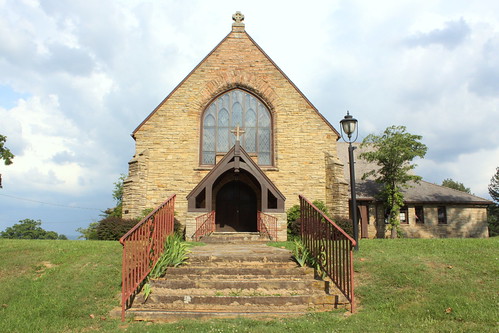
The Alpine Institute was a Presbyterian mission school located in Overton County, TN. Operating in one form or another from 1821 until 1947, the school provided badly needed educational services to children living in the remote hill country of the Upper Cumberland region. In 2002, several of the school's surviving structures were added to the National Register of Historic Places as a historic district.
John Dillard (1793–1884), a minister affiliated with the Cumberland Presbyterian Church of Southern Appalachia, established the Alpine School atop Alpine Mountain in 1821 and expanded the school in the 1840s. The school was burned by bushwhackers during the Civil War and again by the Ku Klux Klan in the years after the war. The school was re-established in 1880 at its current location at the base of Alpine Mountain, and under the leadership of future Tennessee governor A. H. Roberts continued to thrive into the following decade. In 1917, the better-funded Presbyterian Church assumed control of the school and helped it develop into one of the state's most competitive rural schools.
The Alpine Institute was located along Highway TN52 (Jamestown Highway) in the Alpine community, just over 10 miles east of Livingston. This community is situated in a valley carved by Nettlecarrier Creek (which empties into the Obey River just east of Alpine), and is surrounded by high ridges on all sides, most notably the 1,826-foot Alpine Mountain, which rises prominently to the south. A one-lane road, Campus Circle, accesses the church and adjacent buildings.
While Alpine Institute's main school building no longer stands, several important structures associated with the school have survived. The Christ Church Presbyterian (a Gothic Revival-style church, which was completed in 1934) is well-maintained and still used for religious services. The school's gymnasium is now used as a community center, and the manse is still in use as a residence. Other surviving structures include the shop building and a dairy barn. The gymnasium, church, and shop building were all built using the same type of native stone.

Very nice. I am researching Bramletts.
ReplyDelete